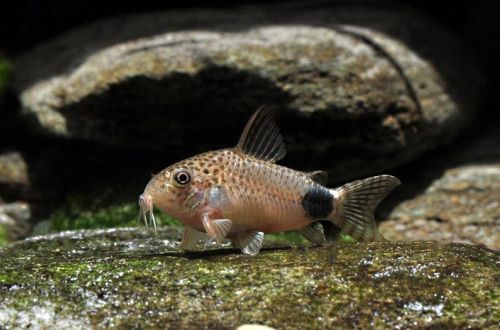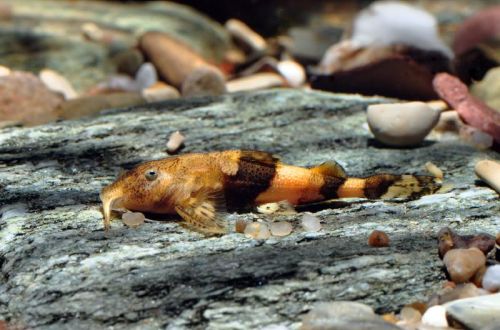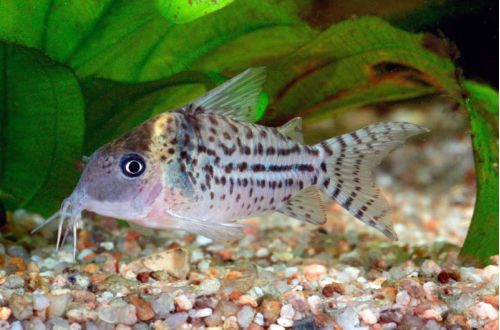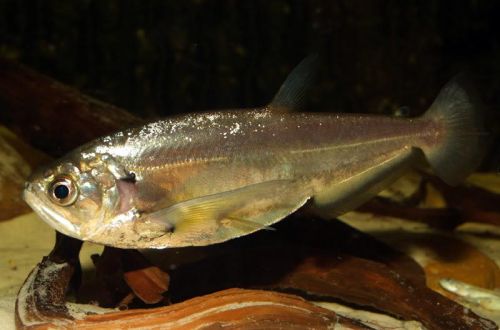
spotted-tailed corridor
Corydoras spotted-tailed, scientific name Corydoras caudimaculatus, belongs to the family Callichthyidae (Shell or callicht catfishes). The name of the fish comes from a characteristic feature in the body pattern – the presence of a large dark spot at the base of the tail.

Native to South America. Inhabits the basin of the Guapore River, covering the border area between Bolivia and Brazil. In the literature, the locality type is defined as “Main channel of Guapore, Rondônia, Brazil”.
Brief information:
- The volume of the aquarium – from 70 liters.
- Temperature – 20-26°C
- Value pH — 6.0–7.0
- Water hardness – soft (2-10 dGH)
- Substrate type – sandy
- Lighting – subdued or moderate
- Brackish water – no
- Water movement – light or moderate
- The size of the fish is 4–5 cm.
- Nutrition – any drowning
- Temperament – peaceful
- Keeping in a small group of 4-6 individuals
Contents
Description
Adult individuals reach a length of 4–5 cm. Catfish has a typical appearance for corridors and differs from relatives only in body pattern. The coloration is gray with pink hues with numerous dark speckles all over the body. As noted above, a characteristic feature of the species is a rounded black spot on the caudal peduncle. It is worth noting that young fish do not look like adults. There is no spot in the body pattern, and the main coloration consists of black-gray pigmentation.
Maintenance and care
A relatively small aquarium of 70–80 liters with sandy substrates and several shelters at the bottom in the form of snags or thickets of plants is considered a comfortable environment for keeping Spotted Corydoras. The water is warm, soft and slightly acidic. The accumulation of organic waste and sudden changes in pH and dGH values should not be allowed. To maintain the biological balance in the aquarium, it is necessary to equip it with all the necessary equipment (heaters, filtration system, lighting) and carry out regular maintenance. The latter includes such procedures as preventive maintenance of equipment, weekly replacement of part of the water with fresh water, cleaning of the soil and design elements, etc.
Food. Omnivorous species, accepts most dry, freeze-dried, frozen and live foods of suitable size. The main condition is that the products must be sinking, since catfish are bottom dwellers.
behavior and compatibility. Calm friendly fish. Prefers to be in the company of relatives. Good neighbors will be the same peaceful species of comparable size. Corydoras are able to get along with almost everyone who does not try to eat them.





